Sony’s Newest G Master Lens Features Superb Resolution and Bokeh with Next-generation AF Performance in the World’s Lightest Large-aperture Telephoto Zoom Lens
- Constant aperture F2.8 70-200mm telephoto zoom
- Fast, precise quiet AF (autofocus) and continuous AF tracking capabilities
- Advanced features for video creators
- World’s lightest 70-200mm large-aperture telephoto zoom lens, approximately 29% lighter than the previous model
- Up to approximately four times[ii] faster AF, with focus tracking, while zooming improved by approximately 30% when compared to the previous model
- Professional-level control and reliability
SAN DIEGO, CA – October 13, 2021 – Sony Electronics Inc. announced the newest lens in their G Master lineup – the FE 70-200mm F2.8 GM OSS II, which delivers an extraordinary combination of resolution and bokeh as well as unequalled AF (autofocus) performance known to Sony’s G Master design.
“Sony is always listening to our customers. Thanks to feedback from users around the world, including leading professionals, Sony continues to develop and evolve the G Master lineup,” said Yang Cheng, Vice President, Imaging Solutions, Sony Electronics Inc. “The FE 70-200mm F2.8 GM OSS II is lightweight and offers outstanding handling in any shooting situation. The newest addition to our G Master series will make a perfect telephoto zoom addition to any creator’s kit who is looking to maximize their gear potential for both stills and video.”
Designed to perfectly pair with Sony’s E-mount camera bodies, the FE 70-200mm F2.8 GM OSS II not only offers outstanding optical quality and advanced AF performance, but it is the lightest F2.8 70-200mm zoom in the world and allows for unprecedented shooting freedom and flexibility. Sony continues to strengthen the Alpha system with this newest addition to the broadest selection of mirrorless lenses on the market as the 65th lens in its E-mount lens lineup.
New Levels of Performance
The new FE 70-200mm F2.8 GM OSS II delivers outstanding image quality with high resolution and clarity. Users can expect a clean and clear image from corner to corner throughout the entire zoom range, even when the aperture is wide open. Thanks to the two aspherical lens elements, including one XA (extreme aspherical) element manufactured to 0.01-micron surface precision, the FE 70-200mm F2.8 GM OSS II effectively controls distance-related aberration variations to ensure outstanding resolution throughout the image area.
The FE 70-200mm F2.8 GM OSS II also employs two ED (extra-low dispersion) spherical glass elements and two Super ED spherical glass elements to significantly reduce chromatic aberration without color bleeding. This lens also includes an ED aspherical element for the first time in an Alpha system lens, which simultaneously suppresses chromatic and spherical aberration, common issues in other telephoto lenses.
Smooth, beautiful bokeh is made possible by a large F2.8 maximum aperture and a newly developed 11-blade circular aperture unit. In addition, the lens’ advanced optical design including an XA element thoroughly suppresses the unwanted ‘onion ring’ effect, further enhancing the bokeh. The FE 70-200mm F2.8 GM OSS II also offers excellent close-up performance with deep bokeh. The minimum focusing distance is just 15.7 inches (0.4 meters) at 70mm and 32.3 inches (0.82 meters) at 200mm, with a maximum magnification of 0.3x. Moreover, the FE 70-200mm F2.8 GM OSS II can be easily paired with Sony’s high-performance 1.4x or 2.0x teleconverter[iii] to extend the lens’ focal length to 400mm[iv] at an F5.6 aperture, all while maintaining its G Master quality.
To avoid any unwanted flare and ghosting in challenging lighting conditions, Sony’s original Nano AR Coating II produces a uniform anti-reflection coating on the surface of the lens. In addition, the FE 70-200mm F2.8 GM OSS II’s optical design also effectively suppresses internal reflections to improve clarity.
Industry-leading Autofocus
The FE 70-200mm F2.8 GM OSS II’s state-of-the-art lens technology brings out the best in the advanced camera body it is paired with. The new lens uses four Sony-original XD (extreme dynamic) Linear Motors for extraordinary fast and precise AF, making it up to approximately four times faster and with focus tracking improved by 30% when compared to the previous model. When paired with Sony’s flagship Alpha 1, the FE 70-200mm F2.8 GM OSS II is capable of high-speed continuous shooting at up to 30 fps[v]. Superb AF tracking is also available even when using a teleconverter. For video, the FE 70-200mm F2.8 GM OSS II offers smooth and quiet AF to reliably lock in focus and track fast-moving subjects, even while zooming, so the user can leave the focusing to the camera.
Advanced Features for Video
With its constant F2.8 maximum aperture, astounding AF performance, versatile control, and solid reliability, the FE 70-200mm F2.8 GM OSS II is a perfect choice for video. The new lens was designed to dramatically reduce focus breathing, focus shift, and axis shift when zooming so that there is minimal unwanted image movement and angle of view variations.
For easy video-use operation, the FE 70-200mm F2.8 GM OSS II features independent control rings for focus, zoom, and aperture (iris), allowing precise manual operation. The aperture ring also has a click ON/OFF switch. Additionally, Sony’s Linear Response MF ensures responsive, low-lag manual focus control. The supplied lens hood also features an opening that allows convenient operation of circular polarizing filters or variable ND filters for more creative flexibility.
Designed for Professionals
The FE 70-200mm F2.8 GM OSS II is the world’s lightest F2.8 telephoto zoom lens and is approximately 29% lighter than the previous model, weighing just under 37 oz (1,045g). In addition to its lightweight, the FE 70-200mm F2.8 GM OSS II was designed for professionals to offer an ideal balance without front-heaviness, ensuring that the lens’ center of gravity falls directly above the tripod mount. It also features internal zoom to keep the center of gravity constant.
The FE 70-200mm F2.8 GM OSS II has been specifically designed for professionals based on their direct feedback. The new lens includes focus functions to support the user’s professional needs such as Full-time DMF, natural and linear manual focus response, and a focus range limiter switch. The FE 70-200mm F2.8 GM OSS II also includes three customizable focus hold buttons that are provided 90° apart for easy access and convenient control when shooting in a horizontal or vertical orientation and nearly any angle.
The FE 70-200mm F2.8 GM OSS II features both a click ON/OFF switch and an iris lock switch for quick, flexible aperture control. The aperture ring click stops can be turned ON to provide tactile feedback when shooting stills, or OFF for smooth, silent aperture control when shooting movies. In addition, the zoom ring torque is optimized and now includes image stabilization with MODE 3[vi] for moving subjects.
Based on feedback from professionals, the FE 70-200mm F2.8 GM OSS II is designed to be reliable in even the most challenging environments. It features dust and moisture resistance[vii], equal to the FE 400mm F2.8 GM OSS and FE 600mm F4 GM OSS. The front lens element features a fluorine coating that repels water, oil, and other contaminants while making it easier to wipe off any contaminants or fingerprints that may become attached to the lens surface.
Pricing and Availability
The new FE 70-200mm F2.8 GM OSS II will be available in December for approximately $2,800.00 USD and $3,500.00 CAD. It will be sold at a variety of Sony’s authorized dealers throughout North America.
Exclusive stories and exciting new content shot with the new FE 70-200mm F2.8 GM OSS II and Sony's other imaging products can be found at www.alphauniverse.com, a site created to educate and inspire all fans and customers of Sony α – Alpha brand.

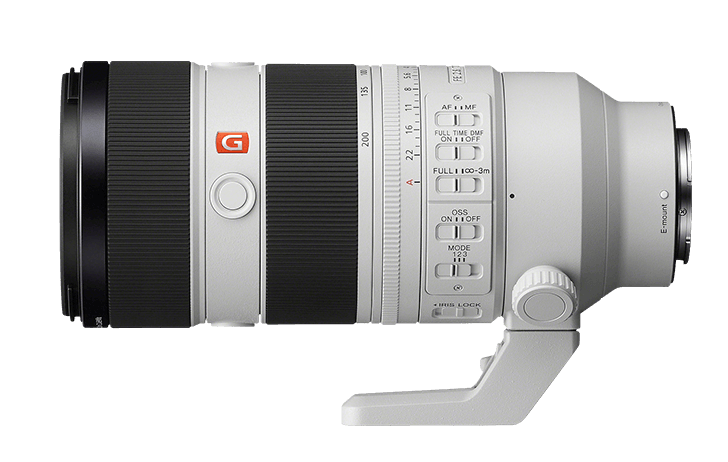
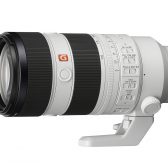
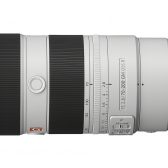
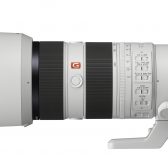
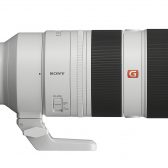
Now all we need is some 3rd party RF glass and competition will be alive again.
Brian
This lens is lighter and can still accept TCs while being internal zoom.
Sony’s FE 70-200mm f/4 is substantially longer and heavier than Canon’s RF version. Sony’s 24-240 is 3% shorter and 4% heavier than Canon’s.
The 400/2.8 and 600/4 lenses have insignificant differences.
Sorry, but the data don’t support the conclusion that, “Sony seems to be able to design smaller and lighter lenses than Canon.” But then, some people on this forum think their opinions are fact, and don’t bother checking the actual, easily verified facts before posting their correspondingly easily discredited opinion.
There was a rumour a while back that 2021 was the year that Sony was going to refresh its glass lineup by 1st - making GM/G versions of the old Zeiss options, so far we've had the below.
35mm f1.4 Distagon to 35mm f1.4 GM
50mm f1.4 Planar to 50mm f1.2 GM
35mm f2.8 Sonar to 40mm f2.5 G
Still left are the 16-35mm f4 Vario-Tessar, 24-70mm f4 Zeiss and 55mm f1.8 Sonar.
Secondly the 70-200mm f2.8 GM and 24-70mm f2.8 GM would both get MKII versions, so far that rumour is 50% true.
It's not quite exactly 50mm. Is is smaller and lighter than the Canon and Nikon, but compromises have to be made to make it so.
Yep I seen some reviews of the new one, though it seems daft to think that the Tameron 70-180 f/2.8 was the more desirable option on Sony until now. I don't think price will matter much, those invested into a system aren't going to change because the lenses are a few hundred more than the competitors.
Sorry to break it to you, but your internally zooming lenses and even your prime lenses have dust in them. Elements move, that moves air, lenses aren’t hermetically sealed, and air contains dust. Basic facts of life.
Dust in a lens. Horrible for people who love to look through one end of an unmounted lens and shine a flashlight/torch through the other end.
For those of us who prefer putting the lens on a camera and actually taking pictures, dust in a lens is not really a problem.
The Apocalypse of Lens Dust